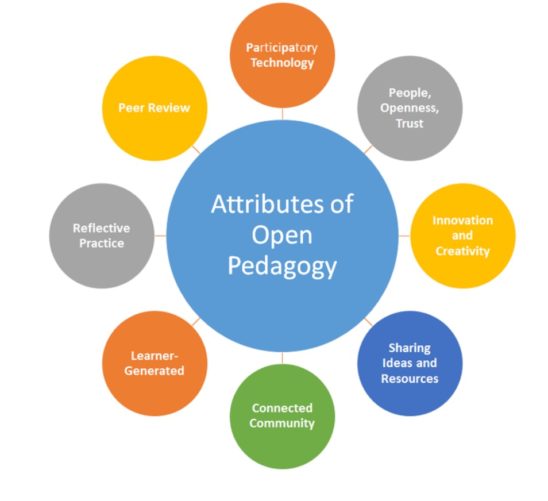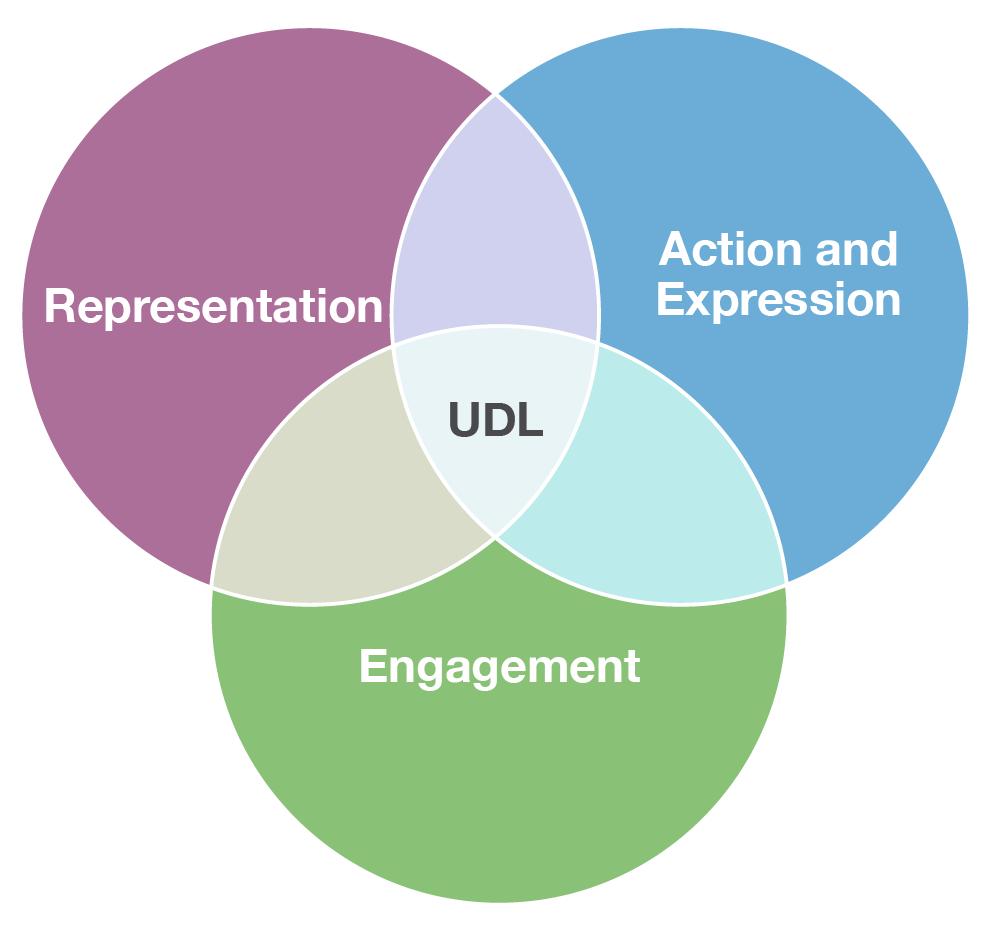What is Open Pedagogy?
Open Pedagogy emphasizes collaboration, student agency, and knowledge co-creation, distinguishing itself from traditional teaching by shifting students from passive recipients to active creators. It empowers educators and students alike through:
- Active Participation: Students engage deeply by contributing original content.
- Shared Knowledge Creation: Educators and learners collaborate openly on educational resources.
- Empowerment: Fostering a sense of ownership in the learning process, encouraging more profound learning and motivation.

[1]
Open Pedagogy challenges traditional teaching models by prioritizing learner autonomy and collaboration. Rather than relying solely on instructor-provided materials, students actively engage in learning by creating and sharing content that benefits the entire educational community. This approach transforms education into a more dynamic and interactive experience, empowering students and educators through a shared sense of responsibility and innovation in the classroom.
I have always valued this teaching style, especially during high school. Although it was not familiar, it made me feel genuinely empowered. Nothing was more satisfying than choosing my assignment topics, diving deeply into them, and presenting my findings uniquely. However, I also observed that this approach had its challenges. Many classmates struggled when the learning path was less linear and more self-directed. While highly motivated students thrived, others found it challenging to keep pace. Striking the right balance is essential, but open pedagogy can enable students to flourish when implemented effectively with the proper support.
The Role and Impact of OER
Open Educational Resources (OER) are transformative in education by providing freely accessible materials, significantly impacting the educational landscape by:
- Reducing Costs: Removing financial barriers associated with textbooks and materials.
- Customization and Adaptability: Allowing educators to tailor resources to specific needs.
- Increasing Equity: Making high-quality resources accessible globally, regardless of economic background.

[2]
OER play a critical role in democratizing education by providing affordable, adaptable resources that can be customized to meet diverse learner needs. They break down economic and geographic barriers, ensuring that students from various backgrounds can access quality educational materials. By fostering educational equity, OER helps ensure that learning opportunities are available to everyone, significantly enhancing accessibility and inclusivity in academic settings.
I have always believed that education should not be a privilege reserved for the wealthy. The economic divide has long been a problem in our society, and the impact of OER is genuinely transformative. I love the freedom to learn almost anything for free, wherever and whenever I choose. OER benefit everyone, regardless of background or economic status. As these resources become more widely available, I believe the gap between education and money will continue to shrink, which is truly inspiring.
Global Trends in OER
Worldwide adoption of OER is growing, highlighting impactful trends such as:
- Government Initiatives: Countries like Canada and India proactively support and fund OER programs.
- International Cooperation: Institutions globally collaborate, sharing resources and best practices.
- Digital Innovation: Technological advances facilitate greater dissemination and use of OER.

[3]
These global shifts present significant opportunities for advancing educational equity while posing challenges such as uneven digital infrastructure and varying copyright regulations.
The growing international support for OER reflects a collective recognition of their transformative potential. Government-led initiatives and cross-border collaborations help pool resources and expertise, making quality education more accessible. However, significant barriers such as disparities in technological infrastructure and inconsistent policy and licensing standards still need to be addressed to ensure equitable access and widespread adoption.
If every country could fully support OER, private-sector education might eventually lose dominance, which is promising. Ultimately, the value of education should be determined by the effort one invests, not by financial means.
Understanding Creative Commons Licensing
Creative Commons licenses are crucial for responsible sharing and use of educational resources, as they clearly define usage permissions. Key benefits include:
- Simplified Usage Rights: Communicated terms enabling straightforward reuse and modification.
- Enhanced Collaboration: Encouraging educators and learners to build upon and share resources openly.
- Protection Against Misuse: Legal frameworks ensuring content creators’ rights are respected.

[4]
Creative Commons licensing streamlines educational resource use, adaptation, and sharing, promoting transparency and ethical content management. By clearly defining usage rights, these licenses protect creators’ work while fostering a culture of collaboration and sharing. This enables educators to confidently use, modify, and build upon others’ materials, enhancing educational content and practices.
I could implement Creative Commons licenses in my work by clearly labelling my educational resources, presentations, and assignments with the appropriate license. This would allow others to confidently adapt and reuse my materials, further enhancing collaboration and innovation within my educational community. Additionally, by incorporating openly licensed resources in my teaching, I would ensure proper attribution to original creators and nurture a respectful, ethical knowledge-sharing culture.
Attributes of Open Pedagogy
Key attributes of Open Pedagogy, including collaboration, transparency, and student-centred learning, foster inclusive and participatory education by:
- Encouraging Collaborative Learning: Students work together, enhancing peer learning and engagement.
- Promoting Transparency: Open sharing of learning materials and processes to encourage trust and mutual respect.
- Focusing on Students’ Needs: Customizing learning experiences based on student interests and feedback.

The core attributes of Open Pedagogy fundamentally shift the educational environment toward a more inclusive and participatory model. By emphasizing collaboration and transparency, students become active partners in their learning, which builds trust and fosters a stronger sense of community. Prioritizing student-centred learning helps ensure that educational experiences remain relevant and responsive to learners’ needs, enhancing overall engagement and outcomes.
I have always strived to implement these practices in my teaching to tailor my approach directly to the class’s needs. Over the years, I have developed various teaching styles and have adapted my methods based on student feedback. I believe that for Open Pedagogy to be effective, it is crucial that students feel their contributions genuinely matter. If students sense that their absence would not affect the class, they may lose the motivation to engage fully. Therefore, I make a concerted effort to empower students by ensuring they genuinely impact how the class is conducted—a principle I consider essential for effective learning.
References:
[1] Hegarty, B. (n.d.). Attributes of open pedagogy [Image]. Tony Bates Associates Ltd. https://www.tonybates.ca/wp-content/uploads/Open-pedagogy-Bronwyn-Hegarty-2.jpg
[2] Paskevicius, M., & Irvine, V. (2022). Framework for Open Educational Practices (OEP) engagement [Image]. Open Praxis, 14(2), Article 266. https://doi.org/10.55982/openpraxis.14.2.266
[3] Pixabay Pexels. (n.d.). Earth globe planet [Photograph]. Pexels. https://images.pexels.com/photos/87651/earth-blue-planet-globe-planet-87651.jpeg
[4] Wageningen University & Research. (n.d.). Creative Commons licences [Image]. Wageningen University & Research. https://storage.googleapis.com/jnl-up-j-op-files/journals/1/articles/266/submission/proof/266-10-2103-1-17-20221209.png
[5] University of the Fraser Valley. (2023). Teaching and learning at UFV [Image]. https://storage.googleapis.com/jnl-up-j-op-files/journals/1/articles/266/submission/proof/266-10-2103-1-17-20221209.png







